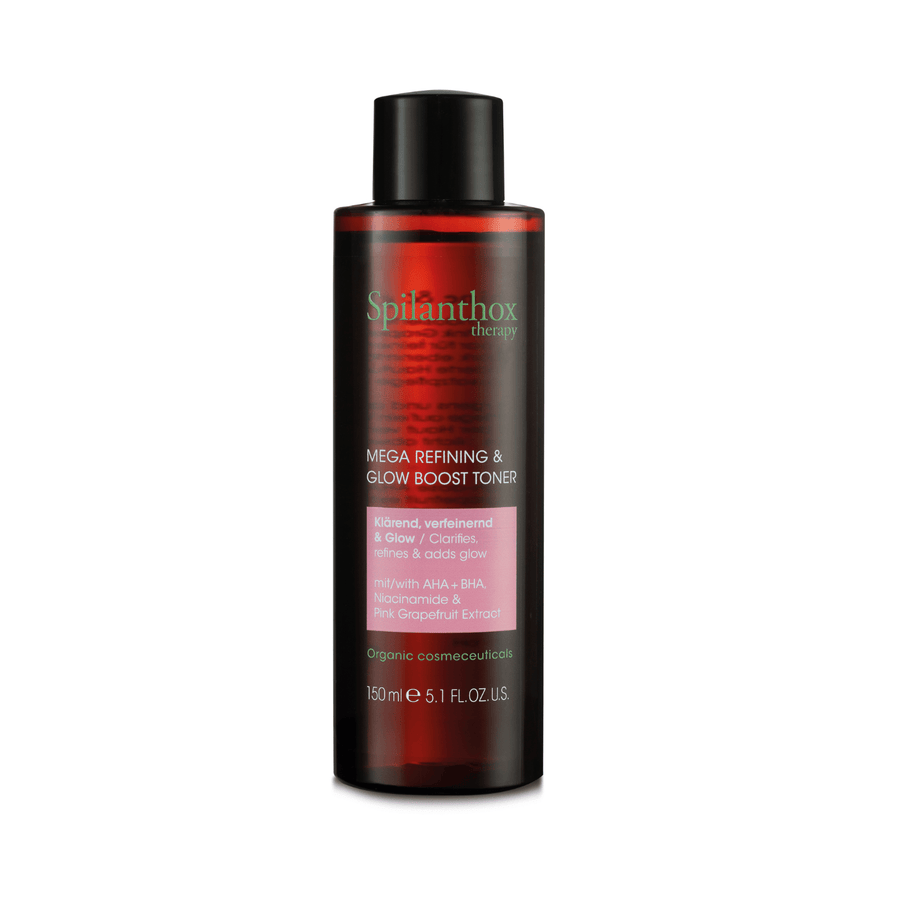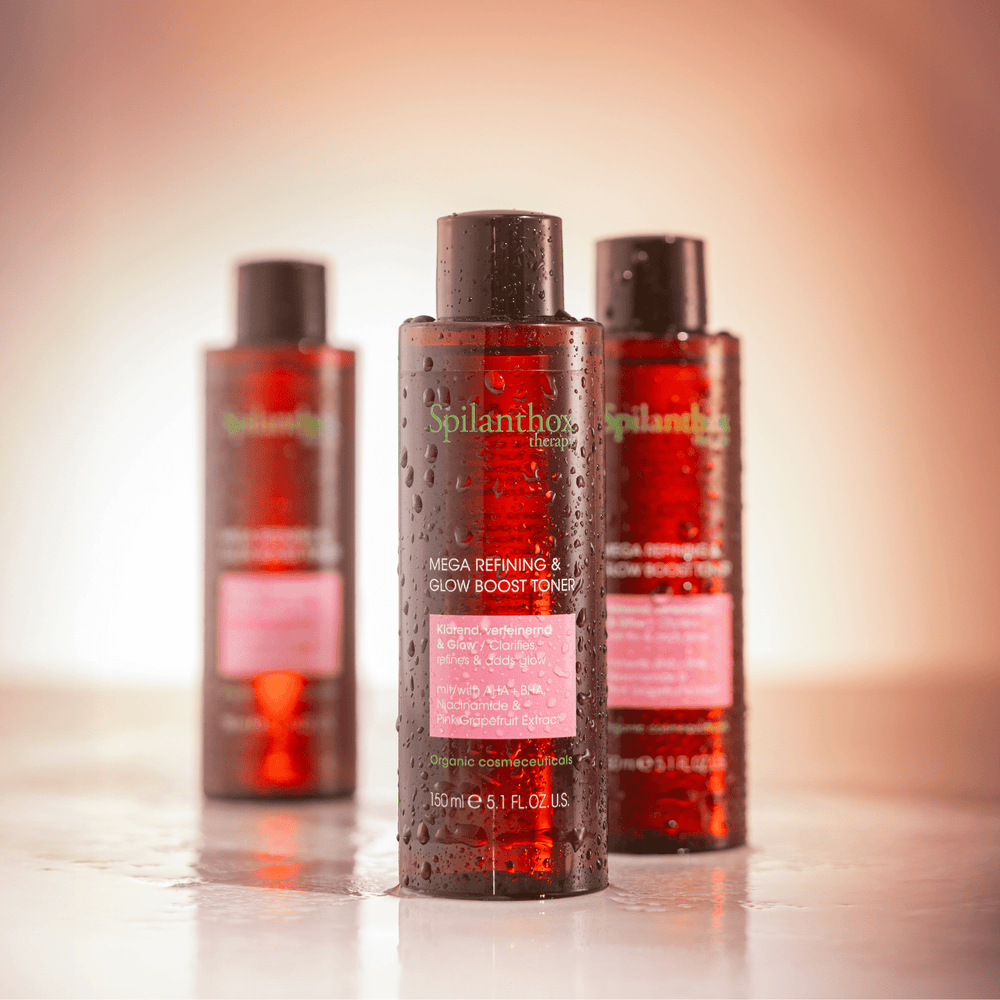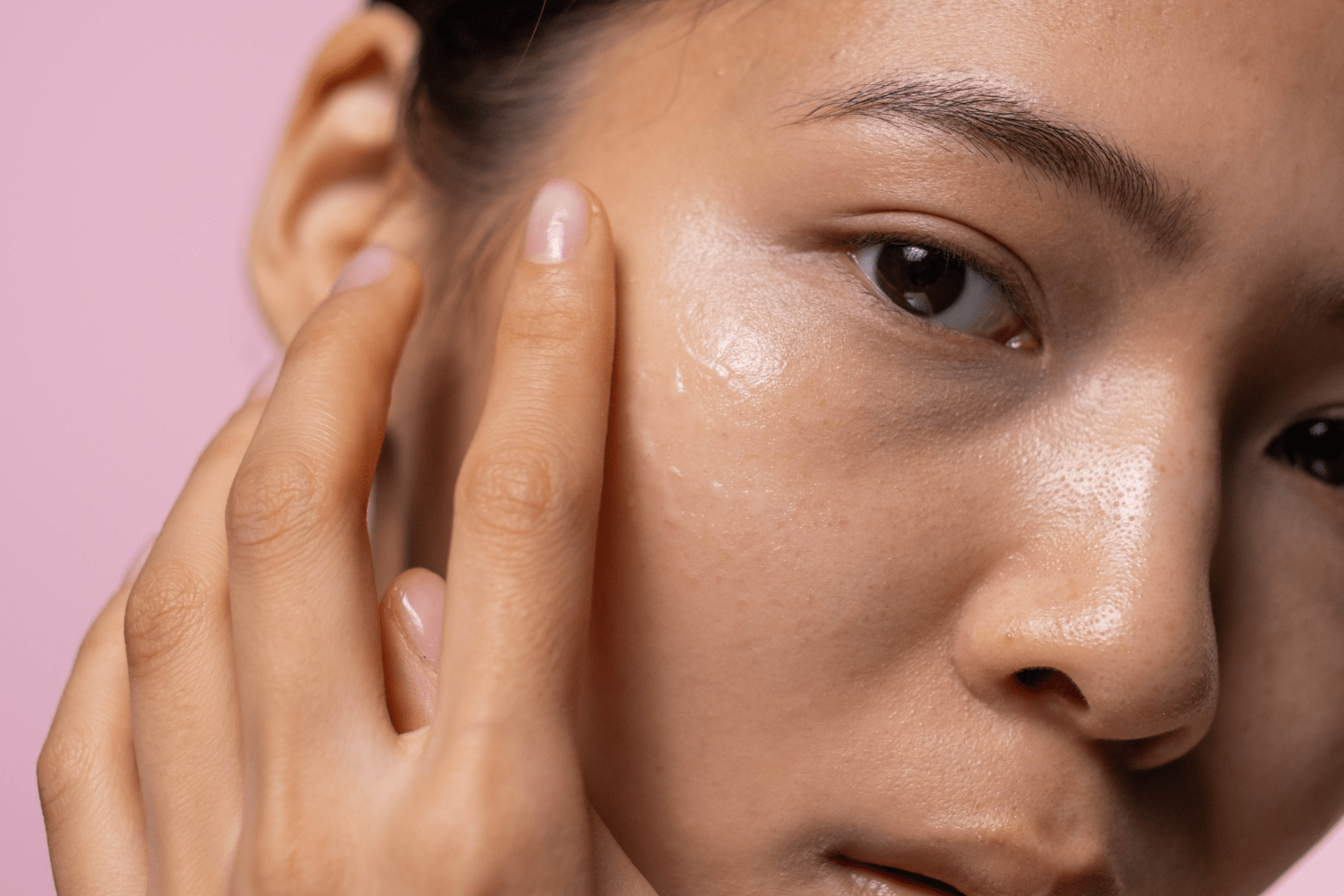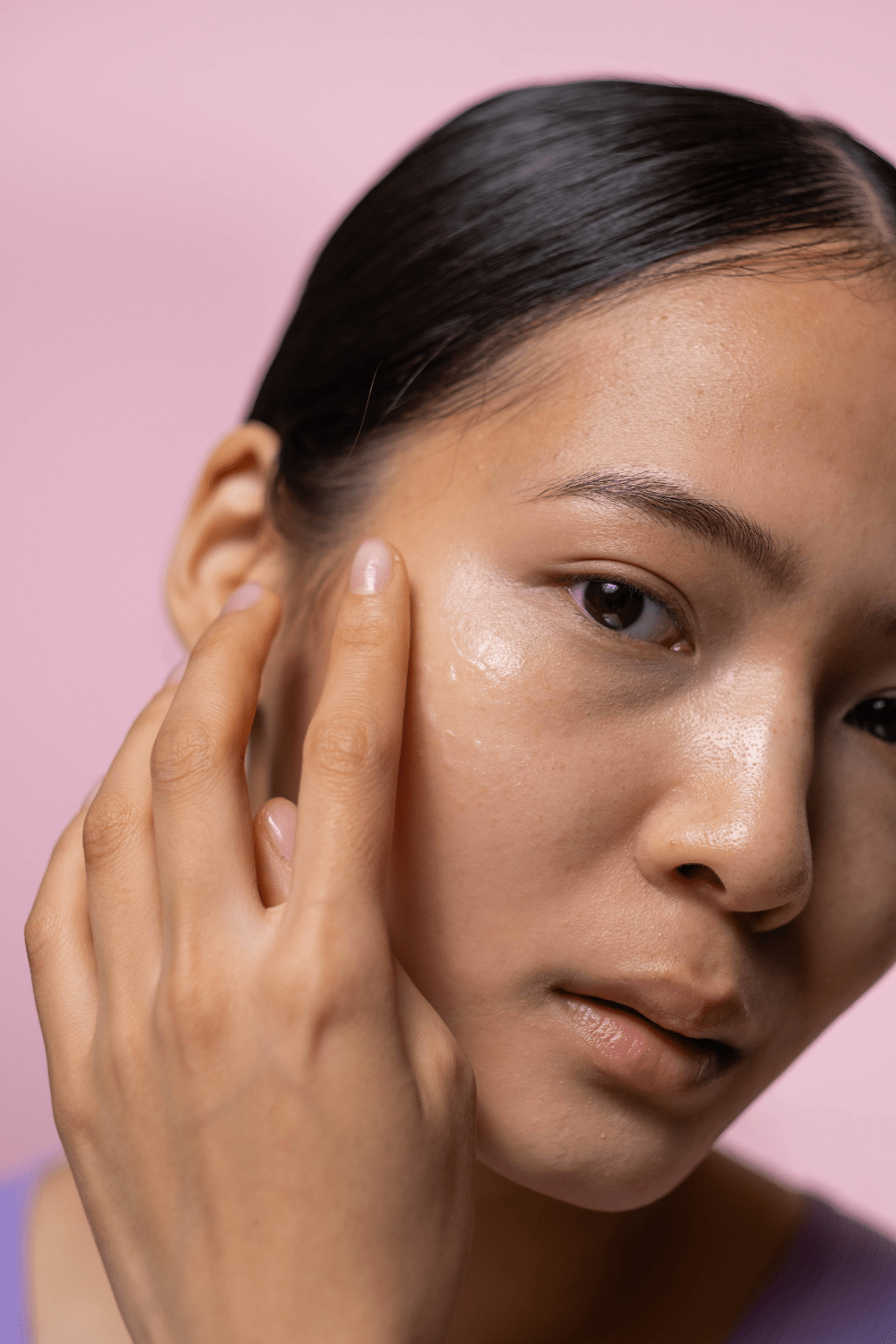Skip to content
Your skin type is: combination skin
It is typical for combination skin that some areas show symptoms of dry skin and other areas show symptoms of oily skin. Most of the time, the forehead, nose and chin (called the T-zone) are shiny and oily, possibly even unclean, while the cheeks are dry, dull and flaky at the same time. It is usually the case that the T-zone tends to develop what is known as seborrhea, i.e. an overproduction of sebum. On the other hand, too little sebum is produced on the cheeks and sometimes also in the eye area. Factors that can lead to combination skin include hormones, stress, diet or incorrect care. In this case, you create the dry or oily areas yourself. Care products that are too harsh or harsh can dry out areas of the face while increasing oil production in other areas. Combination skin needs moisture and it may also make sense to use different products on the individual zones.



